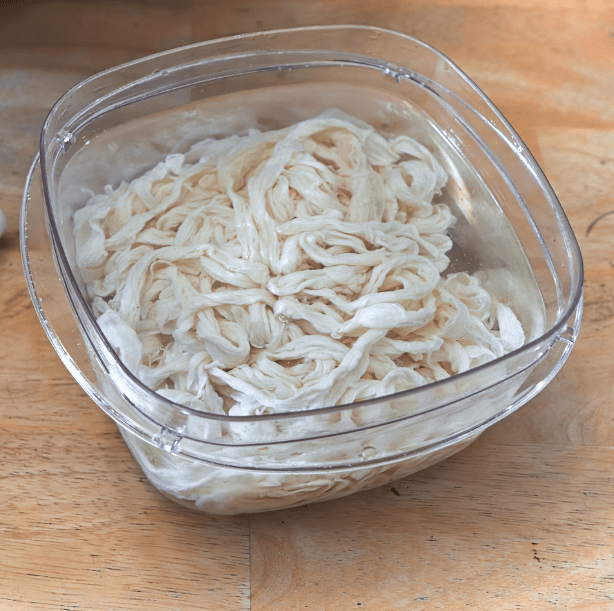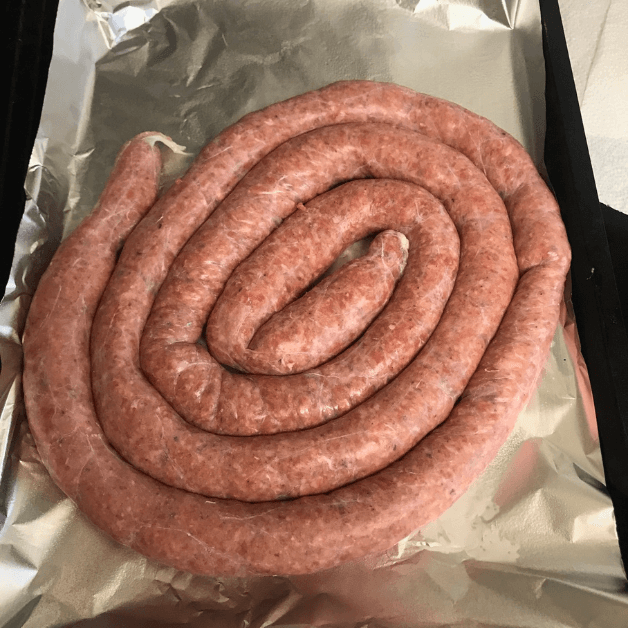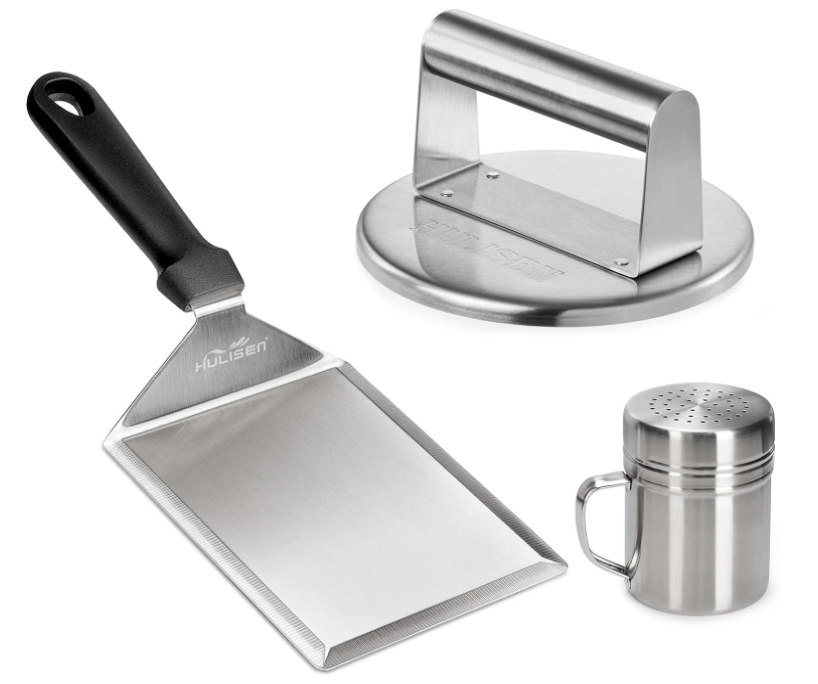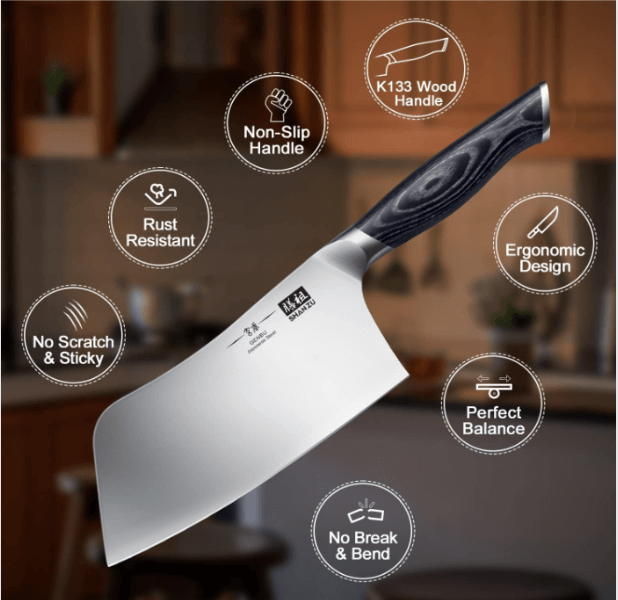Sausage casings have been used for centuries to hold together the various ingredients that make up sausages. They serve as a protective barrier that encases the sausage filling and allows for a uniform shape. Knowing the various types of casings available and their specific uses can help you choose the right one for your sausage-making needs.
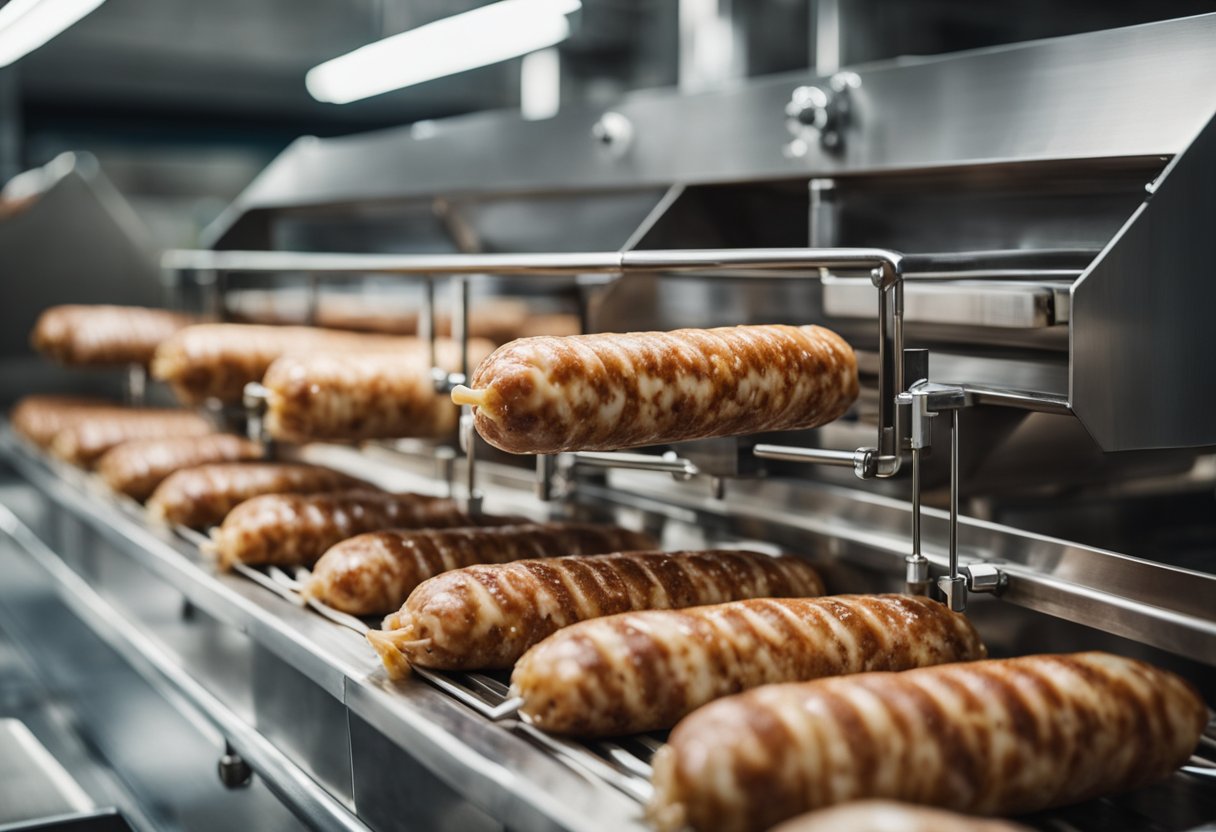
Natural casings are derived from animal intestines or skin and have been the traditional choice for sausage makers. They provide a natural, tender, and flavourful casing that allows for even cooking and a delightful snap when you take a bite. In contrast, artificial casings made from collagen or cellulose offer a more uniform size, ease of use, and affordability, but may not offer the same taste or texture experience as natural casings.
With origins dating back to ancient times, sausage casings continue to be a vital component in the process of making sausages. Whether you’re an experienced sausage maker or just starting out, understanding the different types of casings and their specific uses can lead to more successful and appetising results.
So…:
Sausage casings, both natural and artificial, serve as a protective barrier for the filling and provide a uniform shape.
Natural casings are made from animal intestines or skin, while artificial casings are derived from collagen or cellulose.
Choosing the appropriate casing type for your sausage-making needs can improve the final taste and texture of your sausages.
Origins of Sausage Casings
From Farm to Butcher
Natural sausage casings have been used for thousands of years, with their origins dating back to ancient Sumerians who stuffed meat into animal intestines. These casings are sourced from the sub-mucosa layer of the small intestine of various animals, mainly consisting of collagen. In today’s world, your typical sausage casings come from pigs, cattle, goats, sheep, and sometimes horses.
As a consumer, you might come across various types of casings derived from different animals. For example, you have:
Sheep casings: these are quite thin and used for small, delicate sausages.
Hog casings: thicker and more robust, often used for traditional sausages and larger variants.
Beef casings: strong and sturdy, ideal for salami, large sausages, and other cured meats.
These natural casings are usually removed from the animal during the butchering process, where the intestines are carefully separated from the rest of the internal organs. The casings then go through a cleaning procedure to remove any impurities, bones, and tendons before being classified according to their quality.
Classification of Animal Casings
Butchers and sausage manufacturers classify casings based on their thickness, strength, and elasticity. These grades help ensure that the final product has a consistent texture and appearance. Here’s a general guideline on how natural casings are graded:
A-Grade casings: these casings have the highest quality, with excellent thickness and strength. They’re perfect for premium products and will give your sausages a beautiful, uniform appearance.
B-Grade casings: a step down from A-Grade, these casings have slightly less thickness and strength. They’re still suitable for most sausages but may not provide an utterly consistent appearance.
C-Grade casings: these casings have the least desirable qualities but can still be used in certain sausage production scenarios depending on your preferences and budget.
By understanding the origins and classifications of sausage casings, you’ll have a better appreciation for the process and craftsmanship that goes into making your favourite sausages. Enjoy the rich history and culinary delight that natural casings bring to the table with each delicious bite you take.
Types of Sausage Casings
In this section, we will cover the different types of sausage casings available for use in sausage making. These casings can be broadly classified into three categories: Animal Casings, Artificial Casings, and Cellulose and Plastic Casings.
Animal Casings
Animal casings are the traditional choice for sausage making, and are made from the cleaned intestines of various animals. There are three main types of animal casings:
Natural Casings: Made from the submucosa layer of animal intestines, often from cattle, sheep, or pigs. Natural casings impart a unique flavour and texture to the sausage and are prized for their distinctive “snap.” They can be quite delicate, so handle with care.
Sheep Casings: The smallest of the natural casings, sheep casings are perfect for breakfast sausages and other slender links. They have a tender bite and a mild flavour that complements delicate sausage mixtures.
Hog Casings: Larger than sheep casings, hog casings are a popular choice for making a wide range of sausages, including bratwurst and Italian sausage. They are stronger than sheep casings and provide a good balance of bite and flavour.
Beef Casings: The largest and most durable of the animal casings, beef casings are ideal for heavy sausages like salami and summer sausage. They have a robust and earthy flavour that complements strong, savoury sausage mixtures.
Artificial Casings
As the name suggests, artificial casings are man-made alternatives to natural casings. They are popular for their uniform size, ease of handling, and cost-effectiveness. The two main types of artificial casings are:
Collagen Casings: Derived from animal collagen, these casings are more uniform in size and easier to work with than natural casings. They are well-suited for a variety of sausages, but lack the natural ‘snap’ of animal casings. Regardless, they are a versatile and beginner-friendly option.
Fibrous Casings: Made from a mix of paper and cellulose, fibrous casings are strong and hold their shape well. They are non-edible and need to be peeled off after cooking but are an excellent choice for dry-cured sausages like salami and pepperoni.
Cellulose and Plastic Casings
These casings are synthetic alternatives for certain types of sausages:
Cellulose Casings: Manufactured from processed plant cellulose, these casings are transparent and result in a smooth surface on the finished sausage. They are a popular choice for making hot dogs and other skinless sausages.
Plastic Casings: Non-edible casings commonly used for summer sausage, bologna, and salami. These casings require soaking before use and can be cooked in various ways, like being hung in a smoker or oven, or cooked in water until the internal temperature reaches 165°F.
By understanding the characteristics and uses of these various types of casings, you’ll be well on your way to creating delicious sausages tailored to your preferences. Happy sausage making!
Specific Uses of Different Casings
Why you use sausage casings based on their size, appearance and flavour. By understanding their unique properties, you can choose the right casing for your sausages.
Choice Based on Size
Different casings are suited for specific types of sausages based on their size. Here’s a quick overview:
Hog casings: Ideal for medium to large sized sausages, such as salami and bologna. They can hold a large amount of filling and are moderately strong.
Sheep casings: Best for smaller sausages like wieners and breakfast sausages. They are thin and delicate, yet still strong enough to hold the filling.
Collagen casings: These casings come in various sizes and are suitable for a wide range of sausages. They have a uniform shape and are easy to work with.
Choice Based on Appearance
The appearance of your sausages can be important, particularly if you aim to impress your family and friends. Below are some casings based on their visual appeal:
Natural sausage skins: Hog and sheep casings are considered natural casings and provide sausages with a traditional, enticing appearance. They are highly recommended for a homemade, artisanal look.
Collagen casings: If you prefer your sausages to have a consistent and uniform appearance, collagen casings might be the right choice for you. They provide a professional look.
Cellulose casings: These casings are perfect for skinless sausages, as they can be peeled away easily after cooking, leaving a smooth surface.
Choice Based on Flavour
Lastly, let’s explore the casings that can impact the flavour of your sausages:
Hog casings and sheep casings: These natural casings are known for contributing to the overall flavour of your sausages, providing a slight “snap” when bitten into. Their permeable nature also allows for some smoke penetration if you choose to smoke your sausages.
Collagen casings: Although they don’t offer a significant contribution to the flavour, they are still a popular choice due to their ease of use and uniform size.
Cellulose casings: Since these casings are usually removed before consumption, they don’t impact the flavour of the sausages. However, they are great for creating skinless sausages or large diameter sausages like bologna and mortadella.
By considering the factors mentioned above, you can make an informed decision when selecting the ideal sausage casing to meet your needs. It’s time to get cooking and enjoy some delicious homemade sausages!
Sausage Casing: Natural or Not
Natural versus Artificial
When it comes to choosing sausage casings, you will likely encounter various options. Two main categories are natural casings and artificial ones, which include collagen and cellulose casings. Natural casings come from sheep, hog, or ox intestines and are known for their traditional, authentic flavour. They vary in size from 19mm to 36mm and are popular choices for both chipolata and breakfast sausages.
On the other hand, artificial casings offer some benefits like increased durability. For example, collagen casings are made from bovine hide and come in various sizes, while cellulose casings are plant-based and often used for temporary purposes like holding the sausage shape during cooking.
Health and Nutrition Considerations
As for health and nutrition, natural casings are usually seen as a healthier option due to their origin. However, both natural and artificial casings are safe to consume and provide a similar texture. Collagen casings are easier to digest, while cellulose casings require removal before consumption as they are not edible.
Pros and Cons of Casings:
| Type | Pros | Cons |
|---|---|---|
| Natural | Authentic flavour | Storage and handling |
| Collagen | Easy to digest, strength | May lack traditional taste |
| Cellulose | Removed after cooking | Non-edible |
Environmental Impact
When examining the environmental impact, cellulose casings, being plant-based, generally have a more favourable carbon footprint compared to collagen or natural casings. The manufacturing process of natural casings is resource-intensive, from animal rearing to the labour required. In contrast. alginate casings are made from seaweed extracts, making them a sustainable and eco-friendly alternative.
Ultimately, the choice between natural and artificial casings depends on your priorities, such as taste, cost, and environmental impact. Whichever casing you decide to use, be mindful of proper handling, storage, and preparation to achieve the desired results.
Sausage Casing FAQs
What are the different types of sausage casings?
There are mainly three types of sausage casings you can choose from: natural, collagen, and cellulose. Natural casings are made from animal intestines, usually sourced from beef or sheep. Collagen casings are produced from animal proteins, while cellulose casings are made from plant-based materials. Each type has its own benefits and applications. For instance, natural casings are preferred for their authentic taste and texture, while collagen casings offer consistency and ease of use.
How do you prepare casings for making sausages?
To prepare your casings for sausage making, first, ensure they are clean and properly stored. If using natural or collagen casings, soak them in fresh water for a couple of hours or preferably overnight in a refrigerator. This helps the casings become more pliable and easier to work with. Change the water periodically, and for best results, soak them overnight in your fridge.
Can you make vegetarian sausage casings?
Yes, you can make vegetarian sausage casings using cellulose materials derived from plant sources. These casings are not only suitable for vegetarian sausages but also for those who might have dietary restrictions. While some argue that cellulose casings may not provide the same texture or flavour as natural casings, they still serve as an alternative for those who seek plant-based options.
What role does casing play in sausage flavour?
The casing plays a significant role in the overall flavour and texture of your sausages. Natural casings, for instance, provide a unique and authentic taste that many enthusiasts prefer. The casing also helps maintain the desired shape, cook more evenly, and retain the moisture and flavours of the sausage filling. Furthermore, certain casings, like collagen or natural ones, can contribute to the overall tenderness and bite of the final product.
Are collagen casings better than natural casings?
Both collagen and natural casings have their advantages and disadvantages. While natural casings offer an authentic taste and may be preferred for traditional sausages, collagen casings provide a more consistent size and greater ease of use. Therefore, the choice between collagen and natural casings ultimately depends on your personal preferences and the purpose of your sausages. For instance, if you’re making homemade sausages where size and appearance matter, collagen casings may be a better choice for you.
How to store unused sausage casings?
Properly storing your unused sausage casings is essential to preserving their quality and shelf life. For natural casings, remove any excess water by running your fingers down the casings and then coat them in fine sea salt. Place the casings in an airtight container and store them in the fridge until next time. As for collagen or cellulose casings, follow the manufacturer’s instructions regarding storage conditions, which usually involve keeping them in a cool, dry place away from direct sunlight.
Interesting Information
Historical Significance:
Sausage casings have been integral to human cuisine for centuries. Originally, they were made from the intestines of animals like pigs, sheep, and cows. This practice dates back to ancient times when people aimed to use every part of an animal to avoid waste. The use of natural casings in sausage making is a fascinating blend of culinary history and sustainability.
Variety of Materials
Today, sausage casings come in a wide variety of materials. Besides the traditional natural casings, there are synthetic options made from collagen, cellulose, and even plastic (not for consumption but used in the processing stage). Each type of casing offers different characteristics in terms of texture, flavour, and cooking properties. For instance, collagen casings are known for their uniformity and strength, making them popular in commercial sausage production.
Flavour Contribution:
Natural casings are porous, allowing for better smoke and heat penetration during cooking. This results in a distinct flavour profile and can significantly impact the taste of the sausage. The choice of casing can be as crucial as the choice of meat and spices in determining the final flavour of the sausage.
Cultural Variations:
The type and size of sausage casings can vary significantly across different cultures and cuisines. For example, thinner casings are typically used for smaller sausages like the German Bratwurst, while thicker, more durable casings are used for Italian salami. This diversity reflects the rich cultural history and culinary preferences of different regions around the world.
